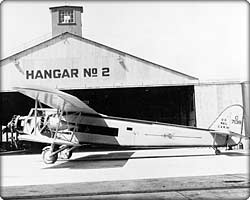Boeing 80 facts for kids
Quick facts for kids Model 80 |
|
|---|---|
 |
|
| Role | Airliner |
| Manufacturer | Boeing |
| First flight | July 27, 1928 |
| Introduction | 1928 |
| Retired | 1934 |
| Primary user | Boeing Air Transport |
| Number built | 16 |
| Unit cost | $75,000 (Model 80A) |
The Boeing 80, sometimes called the Boeing Model 80 or just the Model 80, was an American airliner. It was a biplane with three engines. The Boeing 80 was built by the Boeing Airplane Company. It could carry mail and passengers.
Contents
Development and design
Boeing Air Transport was started on February 17, 1927 by William Boeing. On July 1, 1927, planes from Boeing Air Transport started flying mail from San Francisco to Chicago. At first, the Boeing Model 40A was used for this.
Boeing decided to make a plane to carry passengers. In 1928 it designed the Model 80. The Boeing 80 could carry 12 people. The pilots sat in a cockpit in front of the passengers.
The first Boeing 80 took off on July 27, 1928. Three more Boeing 80s were made before Boeing started to make the Boeing 80A. The Boeing 80A was longer and it could carry 18 people. It also had better engines. It first took off on July 18, 1929.
History
The Boeing 80 first flew for Boeing Air Transport on September 20, 1928. It soon turned out to be successful. The Boeing 80A started being used in September 1929.
In May 1930, Boeing Air Transport hired eight female flight attendants. They first flew on May 15. The Boeing 80 and 80A were used until the Boeing 247 replaced them in 1934.
Different types of Boeing 80
- Model 80 - first type of Boeing 80 (four of these were made)
- Model 80A - more aerodynamic and had new engines (10 of these were made)
Users
- Boeing Air Transport
- Monterey Peninsula Airways
- Morrison-Knudsen Company
- Robert Campbell Reeve
- Standard Oil, California
- United Airlines
Boeing 80s which still exist
One Boeing 80A was found in a dump at Anchorage Airport in 1960. It was fixed up and it is now in the Museum of Flight in Seattle.
Details (Model 80A)
Data from Boeing Aircraft since 1916
General characteristics
- Crew: Three
- Capacity: 18 passengers
- Payload: 898 lb cargo (408 kg)
- Length: 56 ft 6 in (17.22 m)
- Wingspan: 80 ft 0 in (24.39 m)
- Height: 15 ft 3 in (4.65 m)
- Wing area: 1,220 sq ft (113.4 m²)
- Airfoil: Boeing N-22
- Empty weight: 10,582 lb (4,810 kg)
- Max. takeoff weight: 17,500 lb (7,940 kg)
- Powerplant: 3 × Pratt & Whitney R-1690 Hornet air-cooled radials, 525 hp (392 kW) each
Performance
- Maximum speed: 138 mph (120 knots, 222 km/h)
- Cruise speed: 125 mph (109 knots, 201 km/h)
- Stall speed: 55 mph (48 knots, 89 km/h)
- Range: 460 mi (400 nmi, 741 km)
- Service ceiling: 14,000 ft (4,270 m)
- Rate of climb: 900 ft/min (4.6 m/s)
- Bibliography
- Bowers, Peter M. Boeing Aircraft since 1916. London: Putnam, 1989. ISBN: 0-85177-804-6.
- Davies, Ed. "Boeing's Airline: The Life and Times of Boeing Air Transport, Part One". Air Enthusiast, No. 127, January/February 2007, pp. 64–74. Stamford, UK:Key Publishing.
- Davies, Ed. "Boeing's Airline: The Life and Times of Boeing Air Transport, Part Two". Air Enthusiast, No. 128, March/April 2007. Stamford, UK: Key Publishing. pp. 62–73.
- Taylor, H.A. "When Boeing Flew the Mails". Air Enthusiast, Twenty-two, August–November 1983, pp. 64–74. Bromley, UK: Pilot Press.
Images for kids
See also
 In Spanish: Boeing 80 para niños
In Spanish: Boeing 80 para niños



